
Home |
||
|---|---|---|
Before the exhibitions |
Eight Impressionism exhibitions |
After the exhibitions |
|
||
English Painters
John Constable, William Turner
David Cox, Peter De Wint, Richard Parkes Bonington, John Sell Cotman
After 1800, painting in nature was already being used to some extent in England before the Barbizon painters. The outstanding representative was John Constable, who is regarded as the father of realism. It was important to him and all his successors not to "compose" reality, as had been customary until then, but to paint what he saw, to depict it without presuppositions. It was a break with tradition. Almost all Barbizon painters were familiar with his works, which were exhibited in salons in Paris and the Louvre from around 1830.
John Constable
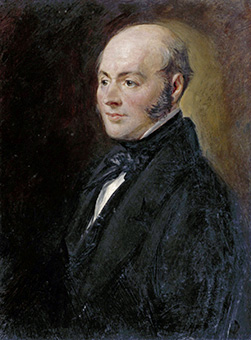
Portrait of John Constable by Charles Robert Leslie
* 11. 6. 1776 in East Bergholt, Suffolk; † 31. 3. 1837 in London-Hampstead
"We see nothing truly till we understand it."
(John Consable)
John Constable grew up in the south of England. Despite studying at the Royal Academy, he was largely self-taught in his painting. His homeland, with its pastures, country lanes, mills, locks and groups of trees, provided an inexhaustible source of motifs. Travelling in England took him to Brighton, Salisbury and many other places, which he captured in his paintings.
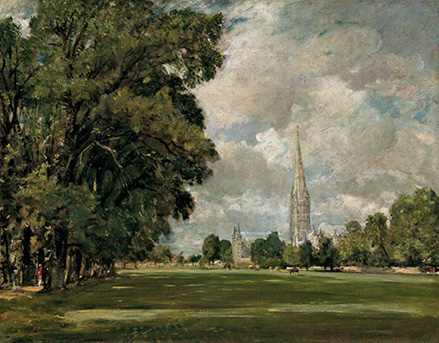
Salisbury Cathedral from Lower Marsh Close
1820 - 73 x 91 cm - Oil on canvas
National Gallery of Art, Washington, USA >
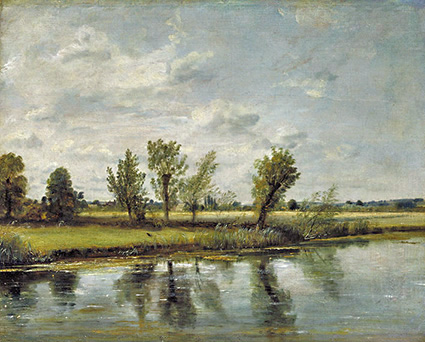
Water meadows near Salisbury
1828 - 46 x 55 cm - Oil on canvas
Victoria & Albert Museum, London, United Kingdom >
He was an important representative of Romantic landscape painting. He wanted to depict the variability of nature's manifestations. John Constable left his mark on 19th century landscape art: Delacroix called him "the father of our landscape painting", Corot, Manet and the painters of the Barbizon school studied his works enthusiastically. In England itself, his art was initially in little demand. In France, he was able to celebrate considerable success with his participation in the Paris Salon of 1824. He exhibited the painting 'The Hay Wain' there, for example.
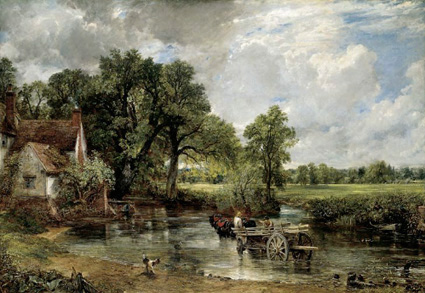
The Hay Wain
1821 - 130 x 185 cm - Oil on canvas
National Gallery, London, United Kingdom >
He painted some pictures in several very similar versions to his well-known paintings:
"The Hay Wayn" or "The Leaping Horse":
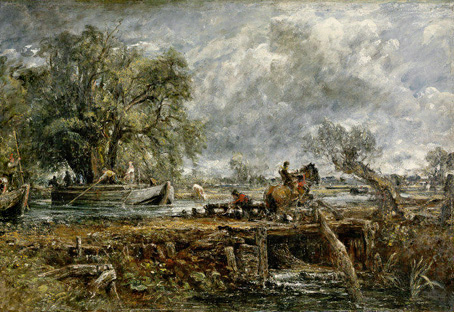
The Leaping Horse
1825 - 129 x 188 cm - Oil on canvas
Victoria & Albert Museum, London, United Kingdom >
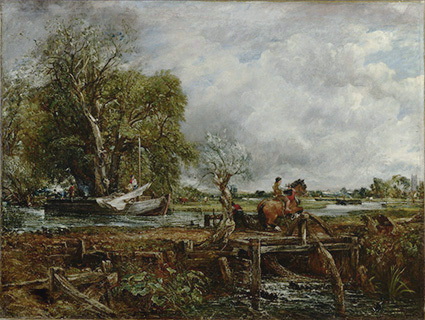
The Leaping Horse
1825 - 142 x 187 cm - Oil on canvas
Royal Academy of Arts (RA), London, United Kingdom >
As much as some English painters had already moved away from painting in the studio and lightened their colours, they were still attached to a transfiguration of nature. The painterly step taken by the Impressionists was still a long way off.
The paintings (especially the oil paintings) were still completed in the studio, but they were the pioneers and models for Pissarro, Monet and others.
However, watercolour painting, which was highly regarded and publicly recognised in England at the time, already showed a view of the landscape that was liberated from the academic requirements of an ideal landscape.
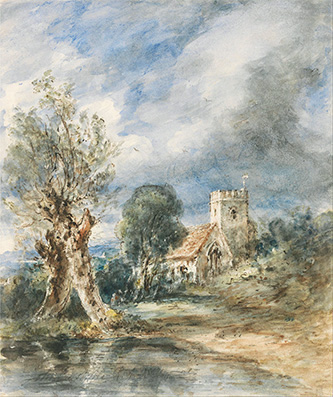
Stoke Poges Church
1834 - 21,6 x 18,1 cm - Watercolour with pen (dark brown ink) on cream wove paper
Yale Center for British Art, Yale University, New Haven, USA >
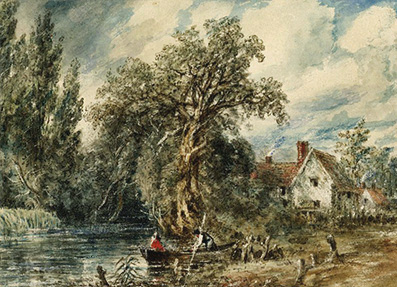
Willy Lott's Cottage
1832 -
14,5 x 19,6 cm - Watercolour with pencil and pen (grey ink) on paper
British Museum, London, United Kingdom
>
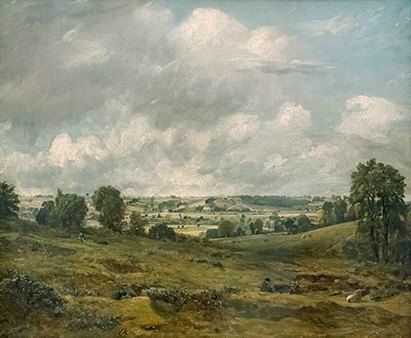
View from East Bergholt to Dedham Vale
ca. 1815 - 46 x 55 cm - Oil on canvas
Die Pinakotheken, München, Germany >
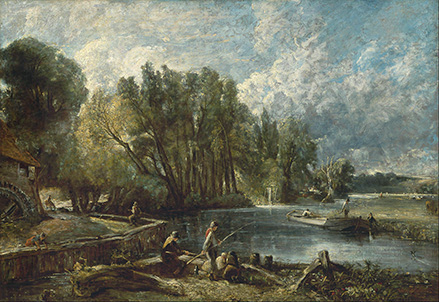
Stratford Mill
1819/24 - 131 x 184 - Oil on canvas
Yale Center for British Art, New Haven USA >
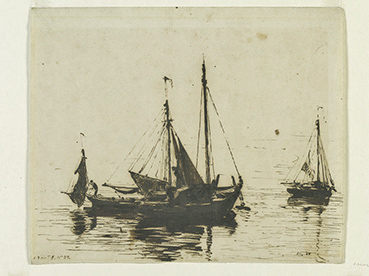
Fishing boats at anchor
9. November, 1822 - 18,5 x 22,4 cm - Pencil and Bister
Victoria & Albert Museum, London, United Kingdom >
Joseph Mallord William Turner
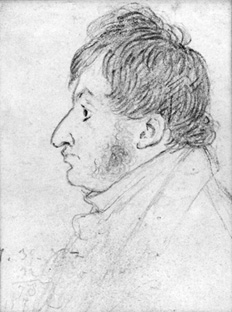
* 23. 4. 1775 in London; † 19. 12. 1851 in Chelsea, London
Turner's influence on painting in England at this time was also strong. He is also considered a forerunner of Impressionism in a broader sense. He concentrated essentially on colour without drawing the motif precisely. His increasingly free style of painting met with disapproval from his contemporaries, and his paintings were seen as sketches at best. Today, he can be described as the painter who established the transition to modernism. One of the truly greats!
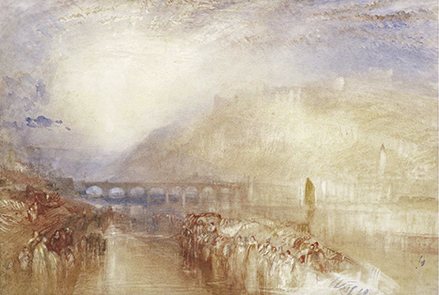
Heidelberg
ca. 1846 - 37 x 55 cm - Watercolour, pen and ink on paper
National Galleries of Scotland, Edinburgh, Scotland >
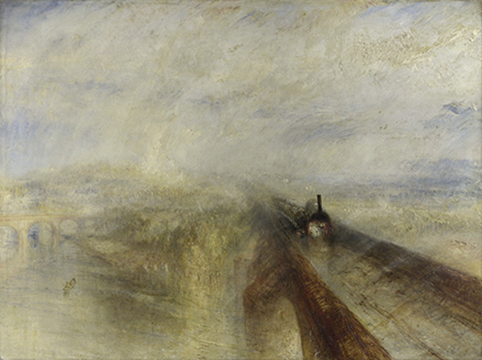
Train, Steam, Speed
1844 - 91 x 122 cm - Oil on canvas
The National Gallery, London, United Kingdom >
William Turner turned 76 years old. A long artistic life, of which over 20,000 works bear witness. There is also a photo of William Turner:
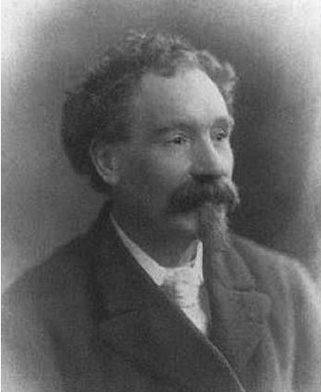
An early picture:
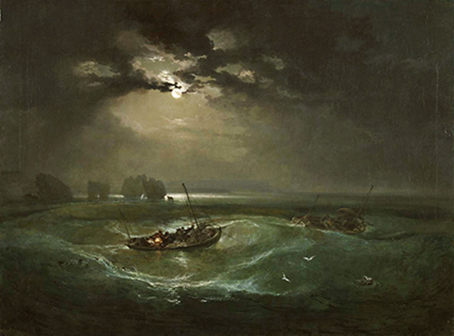
Fishermen at Sea
1796 - 91 x 122 cm - Oil on canvas
Tate Gallery, London, United Kingdom >
Even if some of Turner's paintings appear very modern, they are still a long way from Impressionism. Alfred Sisley wrote: "Although we learn many things from them, Turner and Constable confirm through their works that they did not understand how to analyse shadows, for in Turner's painting shadows are treated only as an effect, as the absence of light." Monet even found Turner's works "unsympathetic" because of the "exuberant romanticism of his imagination..."
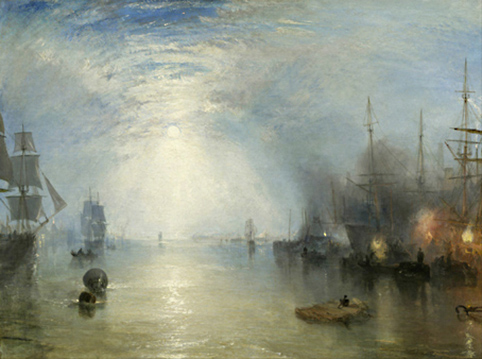
Keelmen Heaving in Coals by Moonlight
1835 - 92 x 123 cm - Oil on canvas
National Gallery of Art, Washington, USA >
After 1800, he travelled to several countries in Europe. This had a great influence on his approach to painting. Many marvellous works were created as a result. William Turner also travelled all over Germany. However, a critic who saw an exhibition at the Royal Academy in London in 1831 wrote: "Turner is the most ingenious of landscape painters, alone is he so extravagant, neglectful of form... ... though connected with a great deal of imagination, but so muddled."
As you can see, the world back then had a different attitude to art. Today, he is certainly one of those painters who have an absolute place of honour in art!
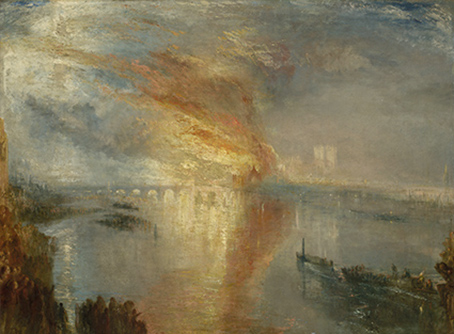
The Burning of the Houses of Lords and Commons, 16 October 1834
1835 - 92 x 123 cm - Oil on canvas
Cleveland Museum of Art, Cleveland, USA >
Turner painted in the studio, as was customary at the time. The sky, for example, was carefully "invented" in the studio. However, many quick sketches and watercolours were created outdoors. The following are a few graphic works (watercolours and opaque colours as well as pencil, charcoal and chalk) as examples.
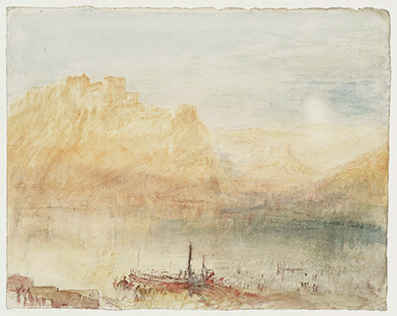
Ehrenbreitstein (Koblenz)
1841 - 23,7 x 30 cm - Watercolour, pencil and ink on paper
Tate Gallery, London, United Kingdom>
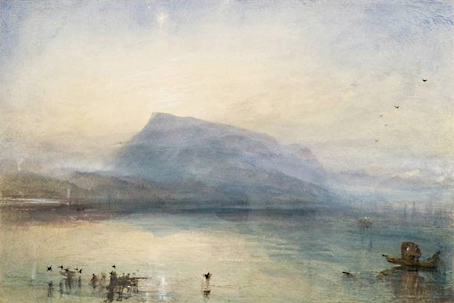
The Blue Rigi, Sunrise (Vierwaldstätter See)
1842 - 29,7 x 45 cm - Watercolour on paper
Tate, Gallery, London, United Kingdom >
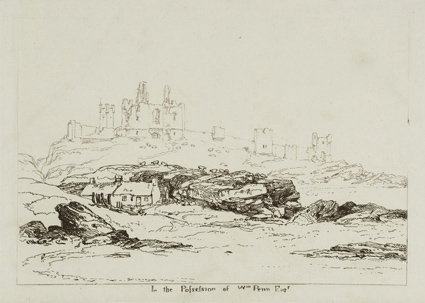
Dunstanborough Castle
1808 - 18,2 × 26,3 cm - Etching on paper
Tate Gallery, London, United Kingdom >
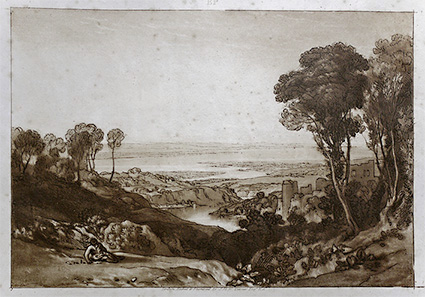
The Junction of the Severn and the Wye
After a watercolour (Tate, London)
1811 - 18,1 × 26,3 cm - Etching, aquatint and mezzotint on paper
Art Institute of Chicago, USA >
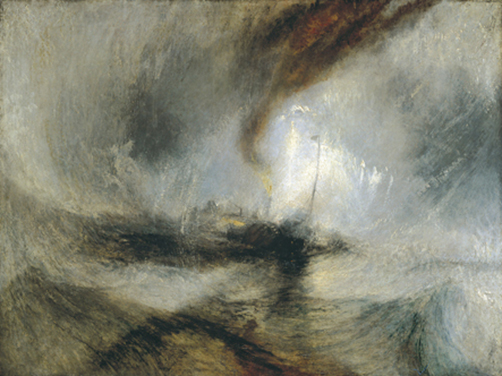
Snow Storm - Steam-Boat off a Harbour's Mouth
1842 - 91 x 122 cm - Öl auf Leinwand
Tate Gallery, London, United Kingdom >
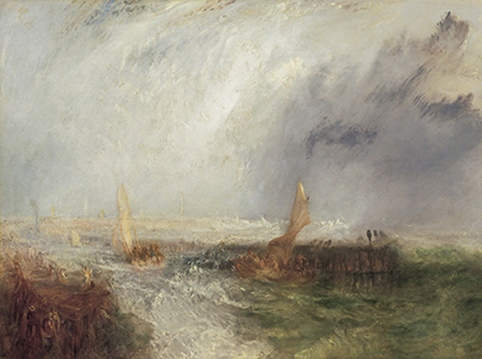
Ostende
1844 - 92 x 122 cm - Oil on canvas
Die Pinakotheken, München, Germany >
A few more - certainly subjectively selected - examples from the large number of English landscape paintings alongside Constable and Turner in the period from 1800 to 1850.
David Cox
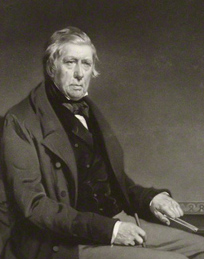
* 29. 4. 1783 in Birmingham; † 7. 6. 1859 in Harbourne bei Birmingham
Landscape painter and graphic artist who first painted stage sets. He was a member of the Watercolour Society. He travelled around England and Wales for his paintings. He also travelled to Holland, Belgium and Paris. He was a successful teacher of his art and also wrote books about it.
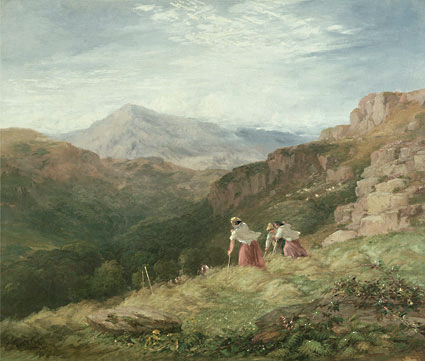
Haymaking on Snowdon
1847 - 61 x 72 cm - Oil on canvas
Towneley Hall Art Gallery and Museum, Burnley, United Kingdom >
Eine Variation:
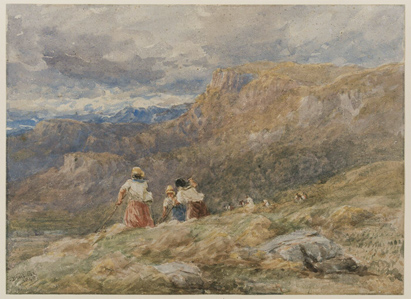
Haymaking, Welsh Mountains
1848 - 26,7 x 37 cm - Watercolour
Victoria and Albert Museum, London, United Kingdom >
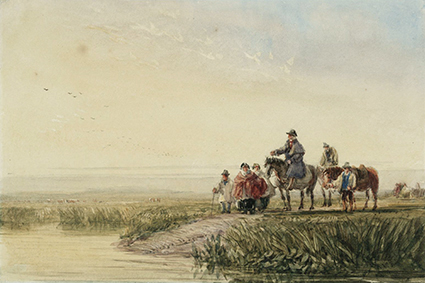
Waiting for the Ferry Boat
ca. 1835 - 19,7 x 29,2 cm - Watercolour on paper
Tate Gallery, London, United Kingdom >
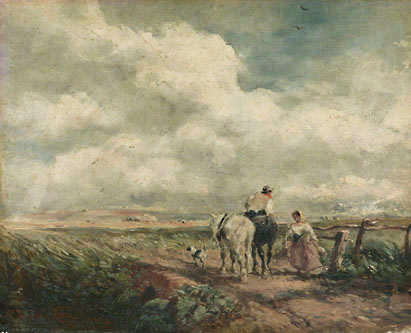
The Road across the Common
1853 - 19 x 24,1 cm - Oil on canvas
Tate Gallery, London, United Kingdom >
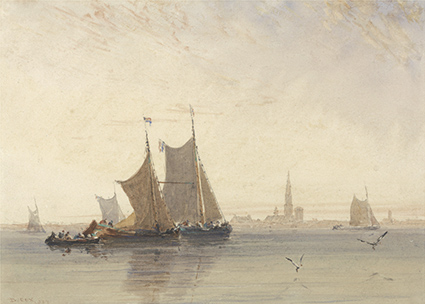
Antwerp, Morning
1832 - 18,1 x 25 cm - Watercolour
Yale Center for British Art, New Haven, USA >
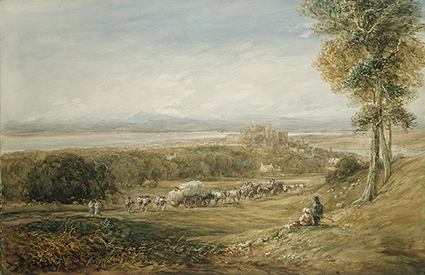
Lancaster: Peace and War
1842 - 50 x 76 cm - Watercolour with gouache, black chalk on wove paper
Art Institute Chicago, USA >
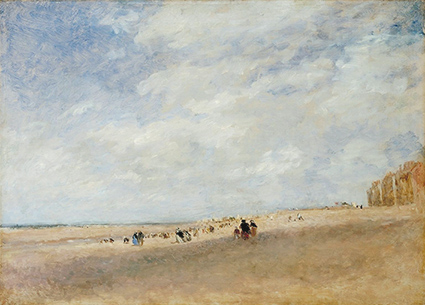
Rhyl Sands
1854 - 45,4 x 63 cm - Oil on canvas
Tate Gallery, London, United Kingdom >
Peter De Wint
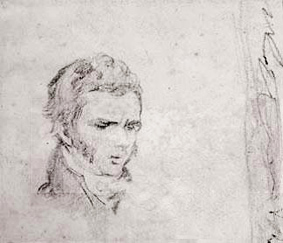
* 21. 1. 1784 in Hanley, (now Stoke-on-Trent) † 30.1. 1849 in London
He was apprenticed to a portrait painter and engraver. In addition to oil painting, he mainly painted watercolours and prints. He became a member of the Watercolour Society.
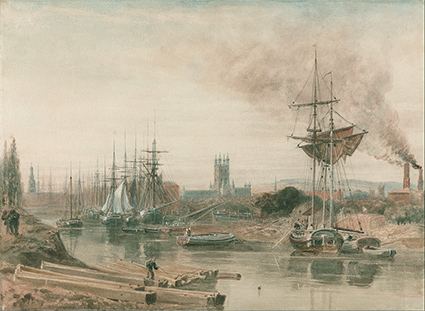
Gloucester
1840 - 46 x 62 cm - Watercolour
Yale Center for British Art, New Haven USA >
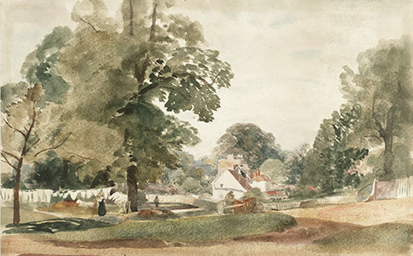
Near Mill Hill
ca. 1820/25 - 22 × 34 cm - Watercolour and graphite on paper
Tate Gallery, London, United Kingdom >
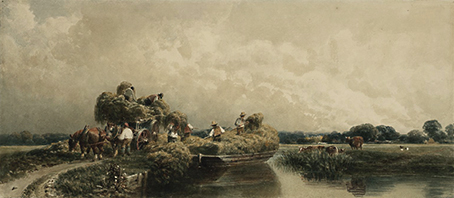
Roman Canal, Lincolnshire
ca. 1840 - 24 x 55 cm - Watercolour on paper
Tate Gallery, London, United Kingdom >
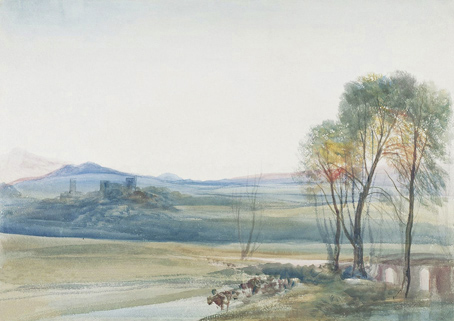
Bolton Castle - Wensleydale
ca. 1840 - (38 x 51 cm?) - Watercolour
Private Collectio
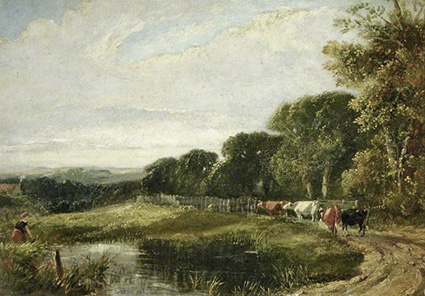
The Wayside Pool
vor 1835 - 31,5 x 45,1 cm - Oil on canvas
Sheffield Museums, Sheffield, United Kingdom >
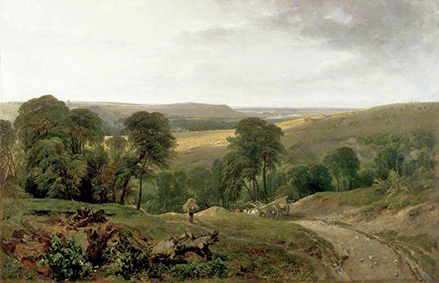
Landscape with a Wagon
1810/48 - 106 x 163 cm - Oil on canvas
Victoria and Albert Museum, London, United Kingdom >
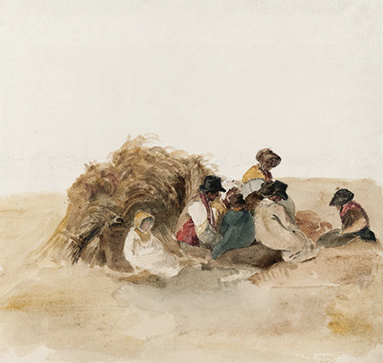
Harvesters Resting
32,4 x 34,0 cm - Watercolour over graphite on paper
The Fitzwilliam Museum, Cambridge, United Kingdom >
Richard Parkes Bonington
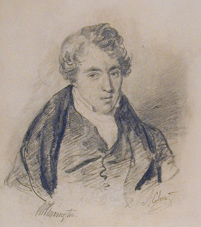
* 25. 10. 1802 in Arnold bei Nottingham; † 23. 9. 1828 in London
He first moved with his family to Calais in 1817, where Bonington learned watercolour painting. He then lived largely in Paris until the end of his life. He is known for his landscapes, exhibited with honours at the Paris Salon and is also considered a pioneer of the Barbizon School.
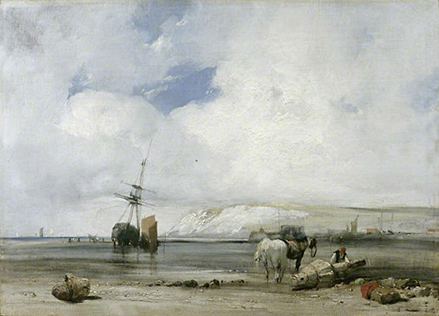
On The Coast of Picardy
1826 - 37 x 51 cm - Oil on canvas
Wallace Collection, London, United Kingdom >
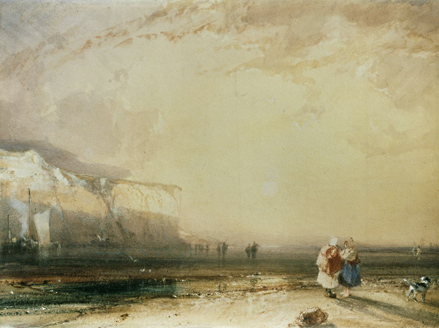
Sunset in the Pays de Caux
1828 - 20 x 26 cm - Watercolour
Wallace Collection, London, United Kingdom >
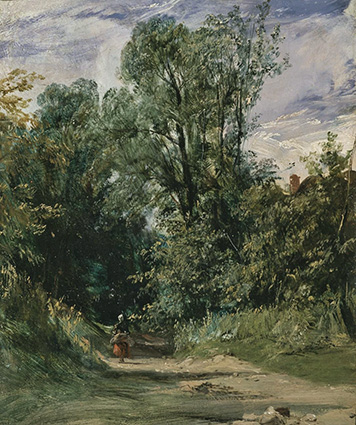
A Wooded Lane (A Lane)
ca. 1825 - 27,9 x 22,9 cm - Oil on cardboard
Yale Center for British Art, Paul Mellon Collection, New Haven, USA >
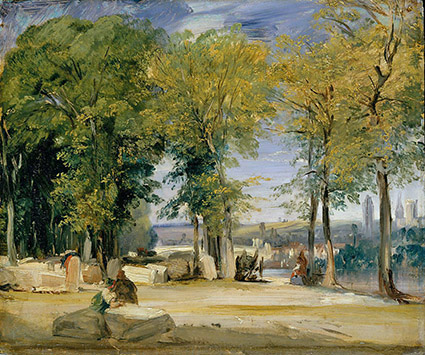
Near Rouen
ca. 1825 - 27,9 x 33 cm - Oil on cardboard
Metropolitan Museum of Art, New York, USA >
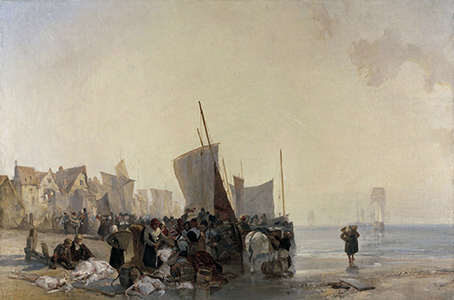
A Fish-market near Boulogne
1824 - 82 x 122 cm - Oil on canvas
Yale Center for British Art, New Haven, USA >
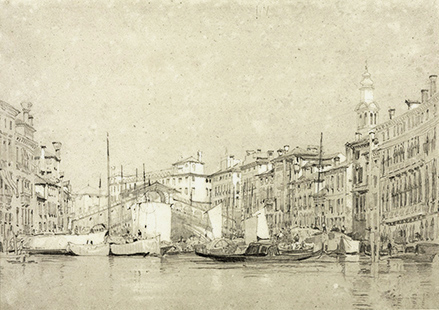
The Grand Canal, Venice
1826 - 20,6 × 28,9 cm - Graphite and gouache on paper
Tate Gallery, London, United Kingdom >
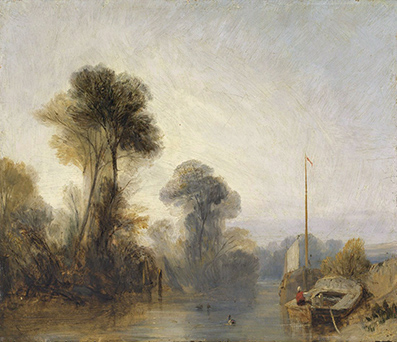
On the Seine – Morning
ca.
1825 - 30,2 x 35 cm - Oil on cardboard
The National Gallery, London, United Kingdom >
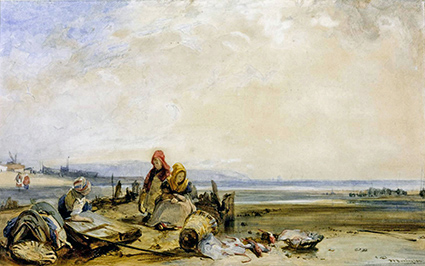
A Scene on the French Coast
ca. 1825 - 21,3 × 34,2 cm - Watercolour and graphite on paper
Tate Gallery, London. United Kingdom >
John Sell Cotman
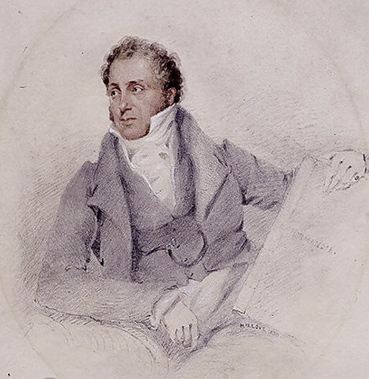
* 16. 5. 1782 in Norwich; † 24. 7. 1842 in London
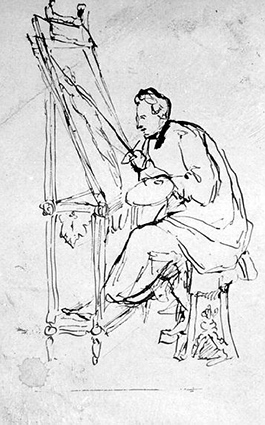
Self-portrait
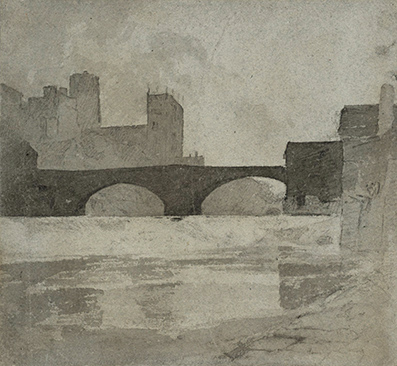
Durham
ca. 1805 - 23,5 x 25,5 cm - Watercolour and graphite on paper
Tate Gallery, London, United Kingdom >
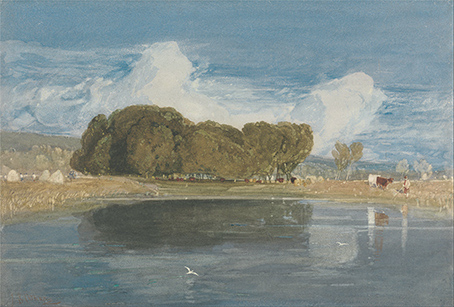
A Summer Day
1827/37 - 31,8 x 46,7 cm - Watercolour and graphite on cream wove paper
Yale Center for British Art, New Haven, USA >
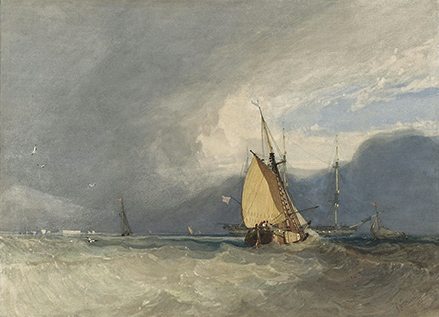
Boats off the Coast, Storm Approaching
1830 - 47 × 65 cm - Watercolour and graphite on paper
The Metropolitan Museum of Art, New York, USA >
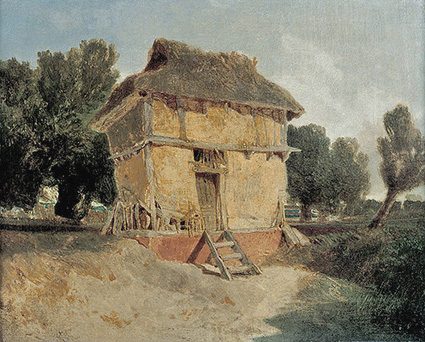
The old pigeon house, Downham Market
ca. 1810 - 32,5 x 39,7 cm - Oil on canvas
Art Gallery of South Australia, Adelaide, Australia >
Ingres / Delacroix |
Gustave Courbet |
|
|---|---|---|
Imprint |